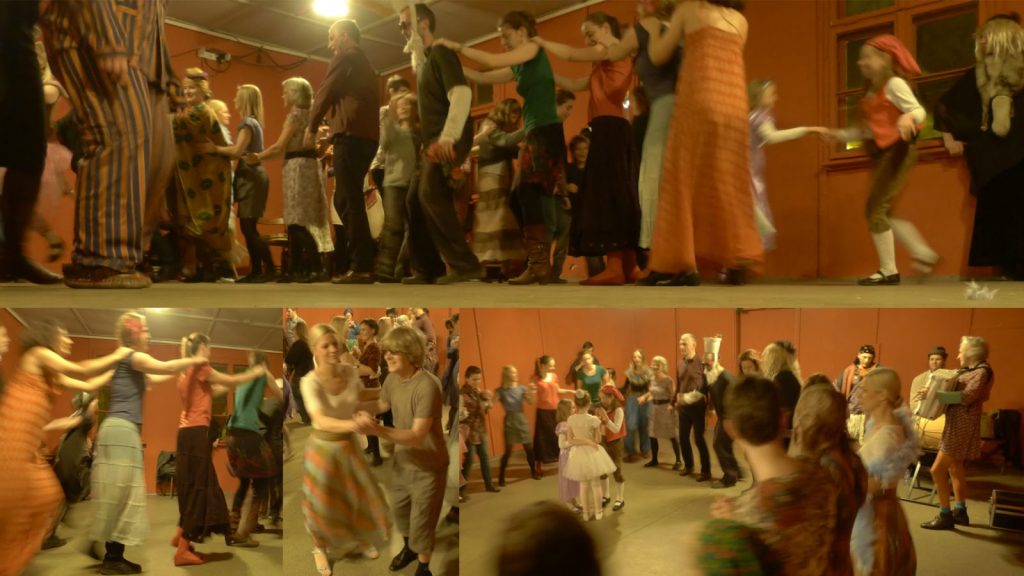The goat must receive
|
The carnival processions of maskers are not the only customs related to the period preceding Lent. In the western part of Poland, there is a characteristic ritual called podkoziołek held on the Tuesday before Ash Wednesday. What is podkoziołek? What and why „must the goat receive”? Let us find out. Tuesday funThe podkoziołek tradition is connected with a dance party held on the night before Ash Wednesday. Podkoziołek has been popular in the region of Wielkopolska (Greater Poland) and in parts of Kujawy (Kuyavia), Łęczyca Land and Sieradz Land. Other parts of Poland seem to not have observed this ritual.  A figurine of podkoziołek made of sugar beet, near Krotoszyn, around 1930 (source: B. Stelmachowska, Podkoziołek in Polish Shrovetide rituals The girl who paid for the dance was allowed to choose her partner. In fact, it was more of a package deal, though. The chosen young man felt obliged to pour water on the girl during the ritual of Śmigus-dyngus (Dyngus Day) on Easter Monday. Keeping the promise signalled to the girl that the interest was mutual. The following is an example of how the bachelors cheered the maids on to pay for the dances:
Here is how the last carnival ritual, including the payment for the music by the maids, was described by Oskar Kolberg:
The goat must receive…The podkoziołek ritual involves a donation that maids have to pay so that the musicians supply the necessary accompaniment. A podkoziołek song: The songs feature an archaic Polish verb, ubodać. The word can mean to party, to banquet, to host [modern Polish biesiadować, bankietować, częstować] (according to Linde) or to make advances, to attempt, but also to have fun, to dance [modern Polish zabiegać, czynić starania, bawić się, tańczyć] (according to Lipiński and Kolberg). It is worth noting that the meaning of the word was becoming less and less comprehensible for the participants of the ritual, so in the end the performers born after 1900 found it really difficult to explain what ubodać actually meant.
PodkoziołekThe name podkoziołek refers to both the figurine which was placed beside the tray, where the girls made their donations, and the annual dance party itself. Although the ritual is, indirectly, synchronised with the Catholic liturgical calendar, the podkoziołek figurine itself has nothing to do with religion. Initially, the podkoziołek figurines took the shape of a nude male figure carved out of wood. They usually showed a character endowed with disproportionately large genital organs. Subsequently, however, the figure underwent an evolution that transformed it, or only its head, into a goat (which symbolised male potency, just like the overly accentuated genitalia), hence the name podkoziołek, which might be translated as a sub-goat or a half-goat. The podkoziołek figurine eventually disappeared and the cash tray was the only ritualistic object left at the party. Likewise, the symbolism of the ritual evolved, too. Whereas dancing in front of a nude male figure was initially meant to magically inspire both the young people’s sexual potency and the nature’s abundant vegetation, it eventually became a mere occasion to enjoy yourself and have fun at the party. After the Second World War, married men and women began to be allowed in podkoziołek. The custom of finishing the party before midnight was not observed as strictly as it had been before, either. In the meantime, podkoziołek parties travelled to the big cities. Restaurants in the city of Poznań still try to attract their guests by advertising podkoziołek parties. Maria Dąbrowska poetically accounted for podkoziołek in her short story Szklane konie:
|




